Inverness West is one of the 21 wards used to elect members of the Highland Council. It includes Kinmylies and Scorguie areas of urban Inverness, and a more rural area, west of the River Ness. It elects three Councillors.
Inverness West is one of the 21 wards used to elect members of the Highland Council. It includes Kinmylies and Scorguie areas of urban Inverness, and a more rural area, west of the River Ness. It elects three Councillors.
| Election | Councillors | |||||||
|---|---|---|---|---|---|---|---|---|
| 2007 | Jimmy MacDonald (Ind.) | Pauline Munro (SNP) | Alex Graham (Liberal Democrats) | |||||
| Apr 2009 | Alasdair Christie (Liberal Democrats) | |||||||
| 2012 | Graham Ross (Ind.) | Allan Duffy (SNP) | ||||||
| 2017 | Bill Boyd (SNP) | |||||||
| Aug 2021 | Colin Aitken (Liberal Democrats) | |||||||
| 2022 | Ryan MacKintosh (Greens) | |||||||
| Party | Candidate | FPv% | Count | |||||||||
|---|---|---|---|---|---|---|---|---|---|---|---|---|
| 1 | 2 | 3 | 4 | 5 | 6 | 7 | 8 | 9 | ||||
| Liberal Democrats | Alex Graham (incumbent) | 34.2 | 1,198 | |||||||||
| SNP | Bill Boyd (incumbent) | 31.1 | 1,092 | |||||||||
| Conservative | Ryan Forbes | 9.3 | 327 | 378 | 383 | 384 | 390 | 403 | 454 | 538 | ||
| Labour | Shaun Alexander Fraser | 8.4 | 295 | 361 | 389 | 389 | 401 | 409 | 453 | |||
| Scottish Green | Ryan MacKintosh | 7.5 | 262 | 299 | 381 | 385 | 416 | 448 | 483 | 597 | 690 | |
| Independent | Duncan McDonald | 4.9 | 173 | 226 | 235 | 236 | 247 | 286 | ||||
| Independent | Helen Smith | 2.8 | 100 | 121.0 | 126.9 | 130.5 | 137.5 | |||||
| ISP | Iain Forsyth | 1.31 | 46 | 55 | 96 | 97 | ||||||
| Independent | David Sansum | 0.3 | 10 | 15 | 17 | |||||||
| Electorate: 8,495 Valid: 3,503 Spoilt: 42 Quota: 876 Turnout: 41.7% | ||||||||||||
A by-election was triggered by the resignation of Graham Ross for family reasons. [4]
| Party | Candidate | FPv% | Count | |||||||
|---|---|---|---|---|---|---|---|---|---|---|
| 1 | 2 | 3 | 4 | 5 | 6 | 7 | ||||
| SNP | Kate MacLean | 33.69% | 718 | 720 | 731 | 816 | 853 | 869 | ||
| Liberal Democrats | Colin Aitken | 31.81% | 678 | 678 | 680 | 705 | 799 | 970 | 1,246 | |
| Conservative | Max Bannerman | 13.74% | 293 | 295 | 302 | 311 | 344 | |||
| Independent | Duncan McDonald | 10.79% | 230 | 232 | 239 | 251 | ||||
| Scottish Green | Ryan MacKintosh | 7.46% | 159 | 160 | 164 | |||||
| ISP | Iain Forsyth | 1.97% | 42 | 42 | ||||||
| Scottish Libertarian | Calum Liptrot | 0.51% | 11 | |||||||
| Electorate: TBC Valid: 2,131 Spoilt: 18 Quota: 1,066 Turnout: 25.3% | ||||||||||
2017 Highland Council election [6]
| Party | Candidate | FPv% | Count | ||||||
|---|---|---|---|---|---|---|---|---|---|
| 1 | 2 | 3 | 4 | 5 | 6 | ||||
| Liberal Democrats | Alex Graham (incumbent) | 27.7% | 964 | ||||||
| Independent | Graham Ross (incumbent) | 20.6% | 719 | 751.4 | 808.03 | 891.4 | |||
| SNP | Bill Boyd | 20.7% | 722 | 727.8 | 752.3 | 782.6 | 785.5 | 1,077.3 | |
| Conservative | Fergus MacKenzie | 11.9% | 416 | 431.6 | 445.3 | 489.2 | 493.7 | 501.2 | |
| SNP | Cath MacInnes | 8.6% | 300 | 304.9 | 317.2 | 345.5 | 347.8 | ||
| Labour | Addie Eghtedar | 6.7% | 235 | 244.9 | 261.7 | ||||
| Independent | Allan Duffy (incumbent) | 3.73% | 130 | 139.4 | |||||
| Electorate: TBC Valid: 3,486 Spoilt: 64 Quota: 872 Turnout: 3,550 (42.6%) | |||||||||
2012 Highland Council election
| Party | Candidate | FPv% | Count | |||||||
|---|---|---|---|---|---|---|---|---|---|---|
| 1 | 2 | 3 | 4 | 5 | 6 | 7 | ||||
| Liberal Democrats | Alex Graham (incumbent) | 24.68% | 610 | 613 | 615 | 650 | ||||
| Independent | Graham Ross | 23.46% | 580 | 594 | 611 | 639 | ||||
| SNP | Allan Duffy | 18.53% | 458 | 467 | 472 | 481 | 485.9 | 488.4 | 725.9 | |
| Labour | Robert Ford | 13.88% | 343 | 349 | 355 | 359 | 366.1 | 369.9 | 393.8 | |
| SNP | Pauline Munro (incumbent) | 11.37% | 281 | 288 | 295 | 296 | 301.6 | 305.5 | ||
| Conservative | Mary Fraser | 3.8% | 94 | 94 | 107 | |||||
| Scottish Christian | Alan Petitt | 2.27% | 56 | 60 | ||||||
| TUSC | George MacDonald | 2.02% | 50 | |||||||
| Electorate: 6,659 Valid: 2,472 Spoilt: 41 Quota: 619 Turnout: 2,513 (37.74%) | ||||||||||
| Party | Candidate | FPv% | Count | |
|---|---|---|---|---|
| 1 | ||||
| Liberal Democrats | Alasdair Christie | 59.6 | 1,503 | |
| SNP | Brian ÓhEadhra | 22.0 | 556 | |
| Labour | Andrew James MacKintosh | 8.3 | 210 | |
| Scottish Christian | Dr Sheila McLaughlan | 4.55 | 115 | |
| Conservative | Donald Gunn MacDonald | 4.4 | 111 | |
| Solidarity_(Scotland) | George MacDonald | 1.1 | 27 | |
| Electorate: 6,623 Valid: 2,522 Spoilt: 18 Quota: 1,270 Turnout: 2,540 | ||||
2007 Highland Council election
| Party | Candidate | FPv% | % | Seat | Count | |
|---|---|---|---|---|---|---|
| SNP | Pauline Munro | 965 | 28.8 | 1 | 1 | |
| Liberal Democrats | Alex Graham | 840 | 25.1 | 2 | 1 | |
| Independent | Jimmy MacDonald | 778 | 23.2 | 3 | 4 | |
| Labour | Caroline Parr | 536 | 16.0 | |||
| Conservative | Mary Fraser | 230 | 6.9 | |||

Local government in Scotland comprises thirty-two local authorities, commonly referred to as councils. Each council provides public services, including education, social care, waste management, libraries and planning. Councils receive the majority of their funding from the Scottish Government, but operate independently and are accountable to their local electorates. Councils raise additional income via the Council Tax, a locally variable domestic property tax, and Business rates, a non-domestic property tax.
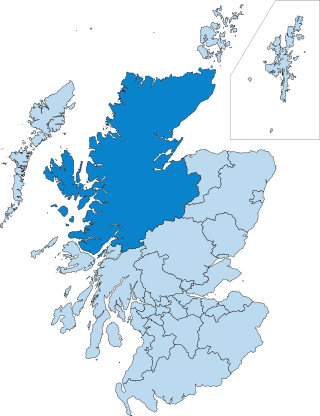
The politics of the Highland council area in Scotland are evident in the deliberations and decisions of the Highland Council, in elections to the council, and in elections to the House of Commons of the Parliament of the United Kingdom (Westminster) and the Scottish Parliament (Holyrood). In the European Parliament the area was within the Scotland constituency, which covers all of the 32 council areas of Scotland.
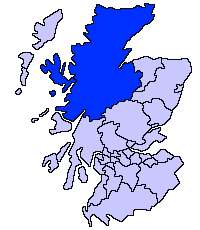
The third set of Highland Council wards, 22 in number, became effective for election purposes in 2007, for the fourth general election of the Highland Council. The new wards were created under the Local Governance (Scotland) Act 2004, and are as defined in recommendations of the Local Government Boundary Commission for Scotland.

The Highland Council is the local authority for Highland, one of the 32 council areas of Scotland. The council is based at the Highland Council Headquarters in Inverness.

Caithness, Sutherland and Ross is a constituency of the Scottish Parliament covering the northern part of the Highland council area. It elects one Member of the Scottish Parliament (MSP) by the first past the post method of election. It is also one of eight constituencies in the Highlands and Islands electoral region, which elects seven additional members, in addition to eight constituency MSPs, to produce a form of proportional representation for the region as a whole.

Inverness and Nairn is a constituency of the Scottish Parliament (Holyrood) covering part of the Highland council area. It elects one Member of the Scottish Parliament (MSP) by the first past the post method of election. It is also one of eight constituencies in the Highlands and Islands electoral region, which elects seven additional members, to produce a form of proportional representation for the region as a whole.
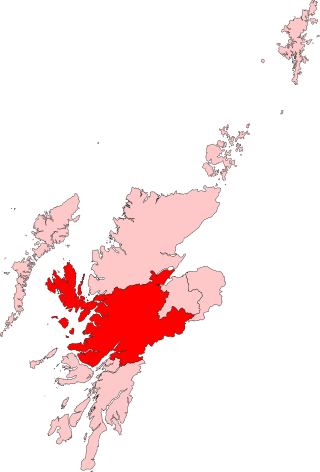
Skye, Lochaber and Badenoch is a constituency of the Scottish Parliament (Holyrood) covering part of the Highland council area. It elects one Member of the Scottish Parliament (MSP) by the first past the post method of election. It is also one of eight constituencies in the Highlands and Islands electoral region, which elects seven additional members, as well as eight constituency MSPs, to produce a form of proportional representation for the region as a whole.
The 2017 Highland Council election was held on 4 May 2017 to elect members of the Highland Council. The election used the 21 wards created under the Local Governance (Scotland) Act 2004; each ward elected three or four councillors using the single transferable vote system. A total of 74 councillors were elected, six less than in 2012.

Cromarty Firth is one of the 21 wards used to elect members of the Highland Council. It consists of North of the Cromarty Firth, west of the Tain and Easter Ross ward

Tain and Easter Ross is one of the 21 wards used to elect members of the Highland Council. Between the Cromarty Firth and the Dornoch Firth and east of the Cromarty Firth ward, it includes the town of Tain and the Seaboard Villages. It elects three Councillors.

Aird and Loch Ness is one of the 21 wards used to elect members of the Highland Council. It includes Loch Ness, the town of Beauly, and the village of Fort Augustus. It elects four Councillors.

Inverness Central is one of the 21 wards used to elect members of the Highland Council. It includes Dalneigh, Glebe, Haugh, Merkinch and South Kessock areas of urban Inverness. It elects four Councillors.
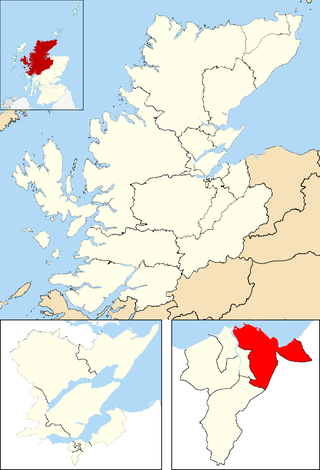
Inverness Millburn is one of the 21 wards used to elect members of the Highland Council. It includes Millburn, Culcabock, Longman and Raigmore areas of urban Inverness. It elects three Councillors.
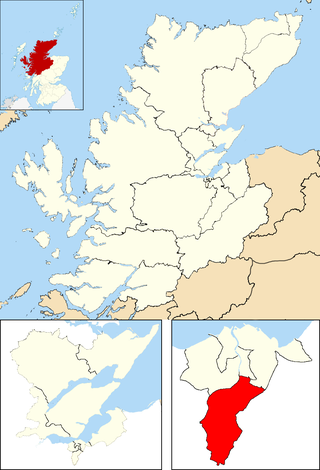
Inverness Ness-side is one of the 21 wards used to elect members of the Highland Council. It includes Drummond, Hilton and Lochardil areas of Inverness, and a more rural area, east of the River Ness. It elects three Councillors.

Inverness South is one of the 21 wards used to elect members of the Highland Council. It includes Cradlehall, Inshes and Westhill areas in or near urban Inverness, and the village of Tomatin, on the River Findhorn. It elects four Councillors.

Wester Ross, Strathpeffer and Lochalsh is one of the twenty-one wards used to elect members of the Highland Council. It includes the towns and villages of Gairloch, Lochalsh, Strathpeffer and Ullapool. It elects four Councillors.
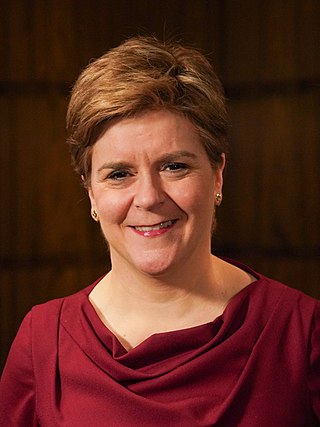
The 2022 Scottish local elections were held on 5 May 2022, as part of the 2022 United Kingdom local elections. All 1,226 seats across all 32 Scottish local authorities were up for election and voter turnout was 44.8%.

The fifth set of Highland Council wards, 21 in number, became effective for election purposes in 2017, for the fifth general election of the Highland Council. The new wards were created under the Local Governance (Scotland) Act 2004, and are as defined in recommendations of the Local Government Boundary Commission for Scotland. The commission's report includes maps of the new wards
Generally, descriptions above are inferred from the maps.
Elections to The Highland Council were held on 5 May 2022, the same day as the 31 other Scottish local government elections. As with other Scottish council elections, it was held using single transferable vote (STV) – a form of proportional representation – in which multiple candidates are elected in each ward and voters rank candidates in order of preference.
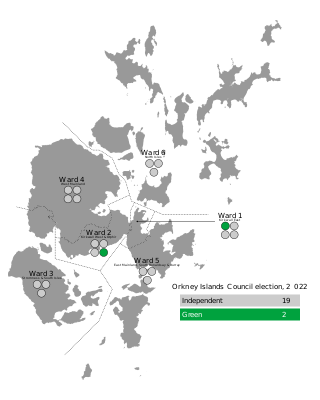
Elections to the Orkney Islands Council were held on 5 May 2022 on the same day as the 31 other Scottish local government elections. As with other Scottish council elections, it was held using single transferable vote (STV) – a form of proportional representation – in which multiple candidates are elected in each ward and voters rank candidates in order of preference.